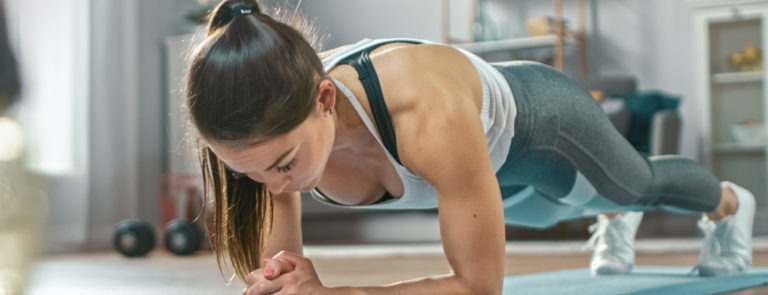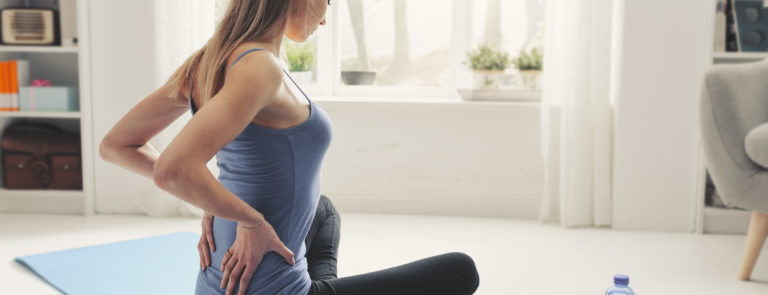When you can’t get to the gym and have little equipment available at home, the good news is there are many arm exercises you can do without weights!
By just using your body weight, you can create an effective workout to strengthen and tone your arms. The added benefit with bodyweight arm exercises is that they require you to engage other muscles, such as your core and legs, therefore delivering the advantages of a total body workout.
These five exercises are suitable to complete in one session and work the muscles in your arms and upper body in a variety of ways.
Fuel your workout before and after the session with high-quality
sports nutrition to support your workout routine.
Creating a circuit session using arm exercises without weights
These five arm exercises can create into an energising circuit-style session that can be completed at home and without any weights. To start, do each of the arm exercises for 45 seconds, then take a 15-second break, before moving onto the next one.
Complete the whole set of arm exercises three times.
1 You might like to increase intervals and repetitions as your fitness improves.
How to complete the arm exercises
Inchworm
Muscles worked:
Most main muscles groups including; deltoids, latissimus dorsi, glutes and core. The inchworm is also an excellent cardio exercise that raises the heart rate, so is useful as a warm-up.
2
Technique:
Start standing with feet shoulder-width apart. Reach down towards the floor, bending your knees if needed, until you touch the floor with your hands. Walk your hands out, while keeping your feet in place, until your body is in a high plank position. In this position, your hands should be under your shoulders and your core muscles engaged. Walk your hands back up towards your feet and raise again to a standing position.
Variations:
For more of a challenge, add a push-up when you reach the high plank position. See push-up instructions below.
Plank walk
Muscles worked:
Deltoids, latissimus dorsi, triceps, glutes, quads, abs and core
3
Technique:
Start in a high plank position, ensuring your hands are under your shoulders, your core muscles are engaged, and your hips are square. Replace your hands with your elbows to descend into a forearm plank, while maintaining a stable body position. Return to the high plank position by pushing up onto your hands again. Make sure to alternate which hand leads the movement to work each side evenly.
Variations:
This exercise can be made more accessible by dropping your knees to the floor, or more challenging by having your feet on a raised surface, such as a step or stable chair.
Bodyweight Triceps Dip
Muscles worked:
Triceps, pectorals and trapezius
4
Technique:
Choose a stable chair like a dining room chair. Sit on the chair with your feet flat on the floor. Hold the edge of the chair, next to your hips, with your fingers pointing forwards. Raise yourself off the chair, then bend the elbows to lower your body in front of it. Your elbows should bend to around 90 degrees. Push back up until your arms are straight, but not locked, and repeat. Try to keep your elbows close to your ribs as they bend and not splaying out to the side.
Variations:
You can try this seated on the floor, mirroring the same position as the chair dip. For more of a challenge, work on the chair, but extend your legs straight as you dip.
Push-up
Muscles worked:
Pectorals, deltoids, triceps and abs
5
Technique:
Start in a high plank position with the hands underneath the shoulders. Engage your core muscles to keep your back in line and to avoid your stomach dipping. Bend your elbows, as you lower your body towards the floor. Push back up to the starting position, keeping a soft bend in the elbows to avoid locking the joints.
Variations:
Push-ups can be made more accessible either by dropping to the knees in a standard push-up position or by raising the surface your hands are on. For example, complete your push-ups with your hands on a bench, box or stable chair. To make the exercise more challenging, raise your feet onto a step, box, or stable chair.
Plank with Spinal Rotation
Muscles worked:
Core, triceps, deltoids, quads, lower back, lower abs, upper abs, lateral abs
6
Technique:
Start in a high plank position with your hands underneath the shoulders. Keep your core muscles engaged to prevent the body from dipping in the middle and keep your hips straight. Rotate your body and lift your right hand into the air to move into a side plank position. Maintain your left hand under your left shoulder. Complete the exercise on the other side, lifting your left hand into the air, to work both sides evenly.
Looking for a full body workout? Try our
HIIT workout to get the heart pumping.
Shop Sports Nutrition
Last updated: 21 April 2020
Sources
1
https://www.self.com/gallery/sexy-arms-no-equipment-slideshow
2
https://www.spotebi.com/exercise-guide/inchworm/
3
https://darebee.com/exercises/up-and-down-planks.html
4
https://www.healthline.com/health/chair-dips#muscles-worked
5
https://www.healthline.com/health/fitness-exercise/muscles-worked-push-ups
6
https://darebee.com/exercises/planks-with-rotations.html



